 Former USSR republics for years didn't tempt me at all, I wasn't interested in fighting with the bureaucracy, corruption, wandering in the cities with post socialist architecture (wide boulevards surrounded by concrete buildings, huge monuments etc.). But on the other hand, there was a new corner of the world where I did not know the people, custom, nature, etc. Books written by Richard Kapuscinski – "Imperium" and “The Kirghiz Dismounts” gave me a new, different, interesting look and a new motivation for the republics of Central Asia and Caucasus. When planning the route I included as well visiting Iran. So far, this was my favorite country. I visited it 10 years ago, now I wanted to compere it and see whether it should continue to be my number one (I recommend again a superior book by Kapuscinski – Shah of Shahs). However, I lowered trip expectations as far as I could and set off with new enthusiasm to unknown destinations. Our honeymoon we've planned to finish within two months in Kazakhstan - there we supposed to go to work in Australia or China. However, bureaucrats of those countries have caused that our return has been delayed by a further two months. In this time we were visiting Mongolia and waited for grant a working visa.
Former USSR republics for years didn't tempt me at all, I wasn't interested in fighting with the bureaucracy, corruption, wandering in the cities with post socialist architecture (wide boulevards surrounded by concrete buildings, huge monuments etc.). But on the other hand, there was a new corner of the world where I did not know the people, custom, nature, etc. Books written by Richard Kapuscinski – "Imperium" and “The Kirghiz Dismounts” gave me a new, different, interesting look and a new motivation for the republics of Central Asia and Caucasus. When planning the route I included as well visiting Iran. So far, this was my favorite country. I visited it 10 years ago, now I wanted to compere it and see whether it should continue to be my number one (I recommend again a superior book by Kapuscinski – Shah of Shahs). However, I lowered trip expectations as far as I could and set off with new enthusiasm to unknown destinations. Our honeymoon we've planned to finish within two months in Kazakhstan - there we supposed to go to work in Australia or China. However, bureaucrats of those countries have caused that our return has been delayed by a further two months. In this time we were visiting Mongolia and waited for grant a working visa.
Route: Georgia - Armenia - Georgia - Azerbaijan - Iran - Turkmenistan - Uzbekistan - Tajikistan - Afghanistan - Tajikistan - Kyrgyzstan - Kazakhstan - Russia – Mongolia
Duration: 6 July – 5 November 2009 (4 months)
Team: honeymoon with Ewelina

![]()
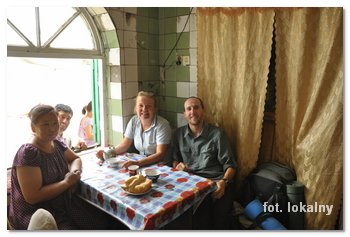 Meals - average daily cost of meals was 3 €. It was a bit more in Georgia, Azerbaijan and in Kazakhstan (about 4 € per day), and the cheapest was Uzbekistan (about 2 €) . The most tasty I will remember Caucasus and Kyrgyzstan. I recommend to try “solanka” (meat stew), “laghman” (pasta with sauce and vegetables), “dimlama” (potatoes with gravy and vegetables), goulash, and shashlyk. Very popular street food in the former Soviet republics is samsa (vegetable or meat pie), manta (steamed meat dumpling) and plov (rice with additives). Ask for "stolowaja", the cheapest local restaurant where you can seat and eat. We didn't like Mongolian and Tajikistan cuisine – it's based mainly on fatty sheep and goat meet. Drinks were based on fermented mare's milk from those animals (kumys). In Iran, there was not many street stalls, and once you found it, the food was usually poorly diversified - often the only choice was kebab or burger. Tips were expected only in the tourist spots in Kyrgyzstan and Kazakhstan (usually 10%). I could drink tap water only in Georgia, Armenia and Iran. In other countries I've preferred to buy a bottled water - access to supermarkets was easy, prices were decent. Of course we ate a lot of fruits, especially bananas, oranges, apples and watermelons.
Meals - average daily cost of meals was 3 €. It was a bit more in Georgia, Azerbaijan and in Kazakhstan (about 4 € per day), and the cheapest was Uzbekistan (about 2 €) . The most tasty I will remember Caucasus and Kyrgyzstan. I recommend to try “solanka” (meat stew), “laghman” (pasta with sauce and vegetables), “dimlama” (potatoes with gravy and vegetables), goulash, and shashlyk. Very popular street food in the former Soviet republics is samsa (vegetable or meat pie), manta (steamed meat dumpling) and plov (rice with additives). Ask for "stolowaja", the cheapest local restaurant where you can seat and eat. We didn't like Mongolian and Tajikistan cuisine – it's based mainly on fatty sheep and goat meet. Drinks were based on fermented mare's milk from those animals (kumys). In Iran, there was not many street stalls, and once you found it, the food was usually poorly diversified - often the only choice was kebab or burger. Tips were expected only in the tourist spots in Kyrgyzstan and Kazakhstan (usually 10%). I could drink tap water only in Georgia, Armenia and Iran. In other countries I've preferred to buy a bottled water - access to supermarkets was easy, prices were decent. Of course we ate a lot of fruits, especially bananas, oranges, apples and watermelons.
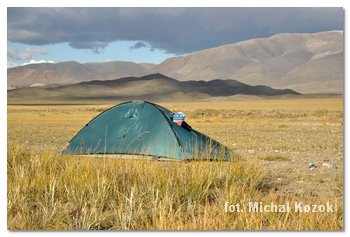
Transport – we covered 17,730 kilometers, the majority by public transport. Free hitchhiking included only 607 km and during trekking we walked 383 km. Train is the cheapest transport in the former Soviet republics. Unfortunately, getting 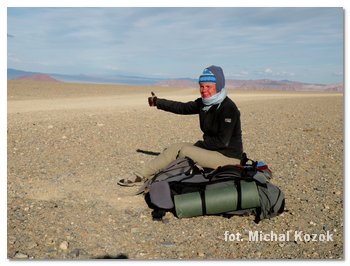

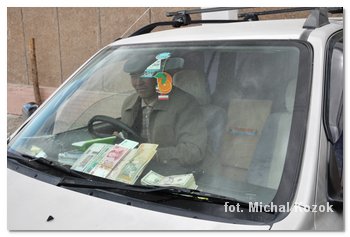
Internet – practically no problem in larger cities, it was available almost everywhere (except Turkmenistan), including hostels. Prices per hour vary typically from 0.5 up to € 1.5 € (the most expensive was Kazakhstan, the cheapest one Iran and Mongolia). Although in Uzbekistan and Kyrgyzstan beware of extra charges trick when downloading more than 5 or 10 MB. During longer surfing check your account from time to time to avoid unpleasant surprises.
Visas– details of a visa procedure to each country are at the end of each region. For most European countries and other developed ones you can easily enter Georgia (no visa) and Armenia (visa at land border). Normal quick visa procedure we should face in the embassies of Afghanistan, Mongolia and Kazakhstan (no odd documents required) - all you can find out without a problem. A little more paperwork and time require a visa to Azerbaijan and Iran.
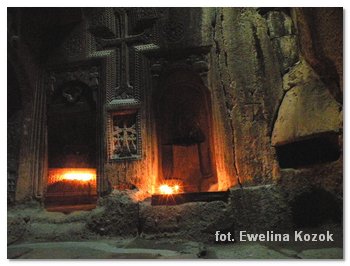 Unfortunately arranging the visas for the former Soviet republics is probably the worst in the world. In addition to long time waiting, visas are generally expensive. I spent a fortune of 670 € for all expenses related to the visas. Not only that - you must specify visa entry and expiration date at the time of application, so you need to plan your trip in advance. Sometimes it is easier to apply for transit visa (in our case Azerbaijan, Turkmenistan and Russia). To apply for a transit visa you already must have a visa of the destination country. In some cases, even two visas to neighboring countries are required (in our case for Turkmenistan visa we had to have an Iranian and Uzbek). Another difficulty is the abnormal requirement of Russia and Uzbekistan - visa support (letter of invitation, which is just a senseless waste of time and money). But this is not the end of surprises - if you do not arrange all the visas in your own country, trying apply for a visa during the travel in Central Asia,
Unfortunately arranging the visas for the former Soviet republics is probably the worst in the world. In addition to long time waiting, visas are generally expensive. I spent a fortune of 670 € for all expenses related to the visas. Not only that - you must specify visa entry and expiration date at the time of application, so you need to plan your trip in advance. Sometimes it is easier to apply for transit visa (in our case Azerbaijan, Turkmenistan and Russia). To apply for a transit visa you already must have a visa of the destination country. In some cases, even two visas to neighboring countries are required (in our case for Turkmenistan visa we had to have an Iranian and Uzbek). Another difficulty is the abnormal requirement of Russia and Uzbekistan - visa support (letter of invitation, which is just a senseless waste of time and money). But this is not the end of surprises - if you do not arrange all the visas in your own country, trying apply for a visa during the travel in Central Asia,  you will be asked for letter of invitation for all republics of the former USSR, and even some countries that have their embassies there, for example, China, Iran, etc. I would like to say that once you will enter the country legally that's the end of problems - but unfortunately I can't – obligatory registration! After entering the Central Asian countries you have several days to report yourself to the immigration office (sometimes they do in hotels) in order to register. Often you have to pay for this “pleasure”. If you have a tourist visa registration is required in Russia, Kazakhstan, Uzbekistan and Turkmenistan. Registration is not obligatory for transit visa.
you will be asked for letter of invitation for all republics of the former USSR, and even some countries that have their embassies there, for example, China, Iran, etc. I would like to say that once you will enter the country legally that's the end of problems - but unfortunately I can't – obligatory registration! After entering the Central Asian countries you have several days to report yourself to the immigration office (sometimes they do in hotels) in order to register. Often you have to pay for this “pleasure”. If you have a tourist visa registration is required in Russia, Kazakhstan, Uzbekistan and Turkmenistan. Registration is not obligatory for transit visa.
![]()
Additional practical information
– when you enter Central Asian countries you often must fill a custom declaration - foreign currency and valuable personal goods (exp. clothing, tent, sleeping bag, GPS, camera, lens, etc.). Customs officers can compare the reality to your statement. You might be in trouble when leaving the country with more value items (or cash) which are not on the entry declaration.
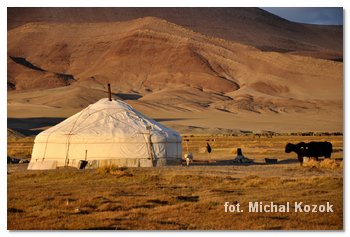
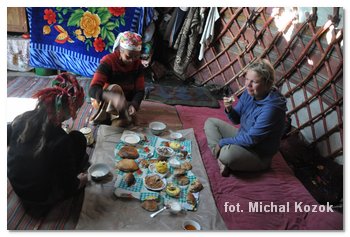 –
Central Asian countries borders look like a puzzle. Stalin mixed all what was possible – maximum confusion. We met Tadzhik in Uzbekistan, Kirghiz in Tajikistan, Uzbek in Kyrgyzstan, Russian in Kazakhstan, Kazakhs in Uzbekistan and Mongolia, etc. Most of the languages on our route is related to the Turkish group (Azerbaijani, Turkmen, Uzbek, Kyrgyz and Kazakh), while in Iran, Tajikistan and Afghanistan, Farsi language family is used. Knowing Russian will be very useful (only in Iran is useless) but mostly in conversation with older - young people under twenty years old rather don't know it already. Officially, the majority of the population in visited former Soviet republics are Muslim, but only a small part of them practice Islam. Alcohol consumption is normal situation, and in some republics even calls for prayer are not allowed. Iran and Afghanistan is more radical in terms of the Islam rules. In Armenia the official religion is Christianity (Armenian Apostolic Church), same like in Georgia and Russia (Orthodox), and in Mongolia is Buddhism.
–
Central Asian countries borders look like a puzzle. Stalin mixed all what was possible – maximum confusion. We met Tadzhik in Uzbekistan, Kirghiz in Tajikistan, Uzbek in Kyrgyzstan, Russian in Kazakhstan, Kazakhs in Uzbekistan and Mongolia, etc. Most of the languages on our route is related to the Turkish group (Azerbaijani, Turkmen, Uzbek, Kyrgyz and Kazakh), while in Iran, Tajikistan and Afghanistan, Farsi language family is used. Knowing Russian will be very useful (only in Iran is useless) but mostly in conversation with older - young people under twenty years old rather don't know it already. Officially, the majority of the population in visited former Soviet republics are Muslim, but only a small part of them practice Islam. Alcohol consumption is normal situation, and in some republics even calls for prayer are not allowed. Iran and Afghanistan is more radical in terms of the Islam rules. In Armenia the official religion is Christianity (Armenian Apostolic Church), same like in Georgia and Russia (Orthodox), and in Mongolia is Buddhism.
– if you be invited to the private home, you can be almost certain that you will be honour with vodka (this applies to all countries except Iran and Afghanistan). Refusing it wouldn't be nice, because when drinking with a host you express respect for him. It's not just about drinking, but above all, before you touch the glass by your mouth, it is necessary to do a toast-speech. Locals treat the toasts seriously. Sometimes we managed to beg for smaller portions of alcohol (not up to the rim).
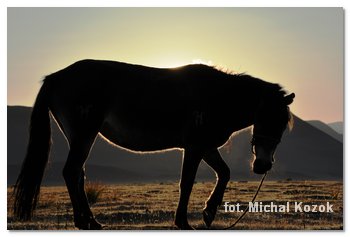
![]()
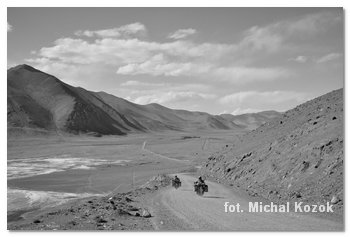 Get there - originally we wanted go the whole route by land, via Ukraine, Romania, Bulgaria and Turkey to Georgia. Because of long time waiting for visas procedures we had not enough time and we bought flight tickets to Turkey. From there, we travelled at express pace (32 hours) to Georgia, first free hitch and later by bus from Antalya to Batumi. For details see the "cost calculation".
Get there - originally we wanted go the whole route by land, via Ukraine, Romania, Bulgaria and Turkey to Georgia. Because of long time waiting for visas procedures we had not enough time and we bought flight tickets to Turkey. From there, we travelled at express pace (32 hours) to Georgia, first free hitch and later by bus from Antalya to Batumi. For details see the "cost calculation".